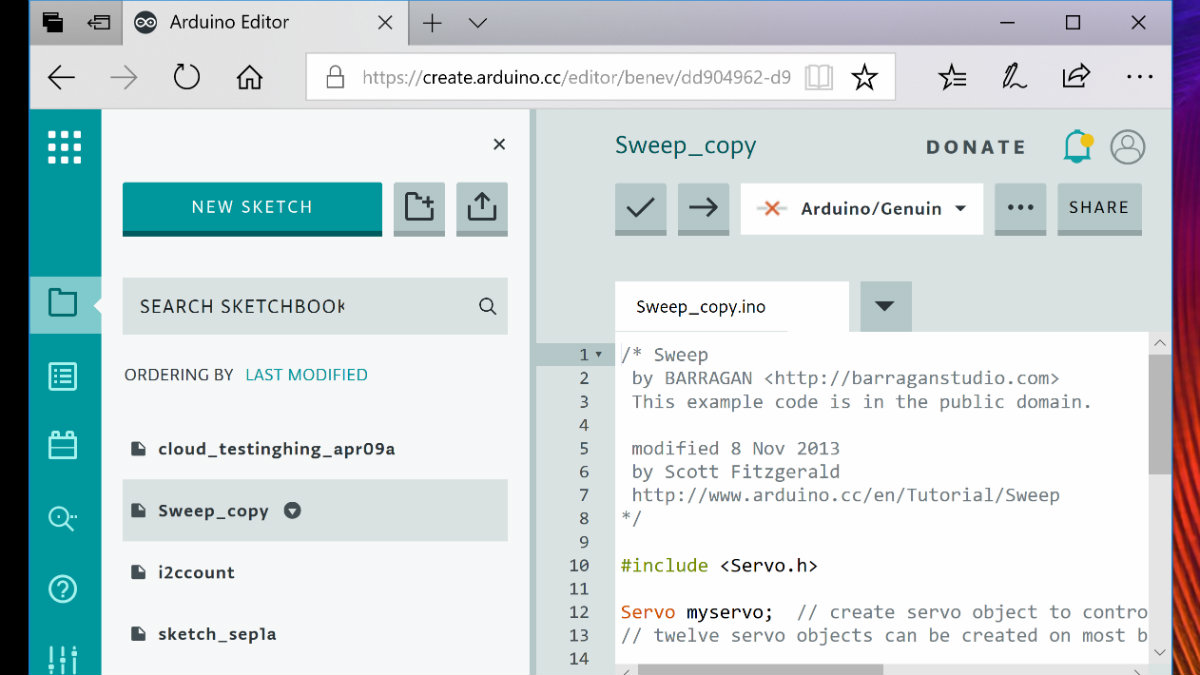
Perhaps the best thing about the Arduino isn’t the hardware, it’s the ecosystem of software and compatible devices that gives users a familiar interface to different boards, and enables hardware developers to easily develop software for new boards. This is all centred around the Arduino IDE, which is a beginner-friendly development environment which helps users get started with any Arduino-compatible hardware. However, Arduino started before makers were commonly connecting their hardware to the internet, and creating web-enabled devices isn’t particularly straightforward on the traditional IDE.
This is where Arduino Cloud comes in – it’s part web IDE and part IoT back end. Point your web browser to cloud.arduino.cc, install a plug-in, and you can use your web browser as an Arduino IDE. This gives you instant access to a wide variety of boards and libraries (and you can upload more if you need). This is a nice addition to the Arduino suite of tools, but not really revolutionary.
The second thing that Arduino Cloud does is give you a back end to allow you to transfer data between your devices. This is, essentially, an MQTT broker housed on the Arduino servers. Again, this isn’t particularly new technology, but it’s something that’s been a little fiddly for beginners to set up. Using Arduino Cloud, it’s just there with no setup needed.
As one final bonus, the new Arduino Cloud also lets you write code for Linux devices such as the Raspberry Pi, as well as microcontrollers. While it’s hardly revolutionary to let you program Linux devices, it is a bonus for anyone who programs in Arduino’s Processing language as it means they don’t need to learn a new language to get started with this class of hardware.

The big thing about Ardiuno Cloud is that it brings things together. It was perfectly possible to do all of this before – and no doubt many readers were – but putting everything into one place makes it much easier to get started. Using a single language and a single environment, you can create a fully networked system of smart devices. In many ways, this is an expansion on what made the original Arduino IDE so popular. It doesn’t overwhelm the user with options, while still providing plenty of power for common uses – of course this means that it’s not going to be perfect for advanced users, but that’s not the point of this environment.
If you’re happy with your coding setup, and networking devices, then there’s probably nothing in Arduino Cloud to make you want to switch. However, if you’re interested in networking sensors, but have been put off by the back-end setup, then Arduino Cloud may be exactly what you’re looking for.
Verdict
Ideal for beginners, it puts everything in one place for ease of use.





